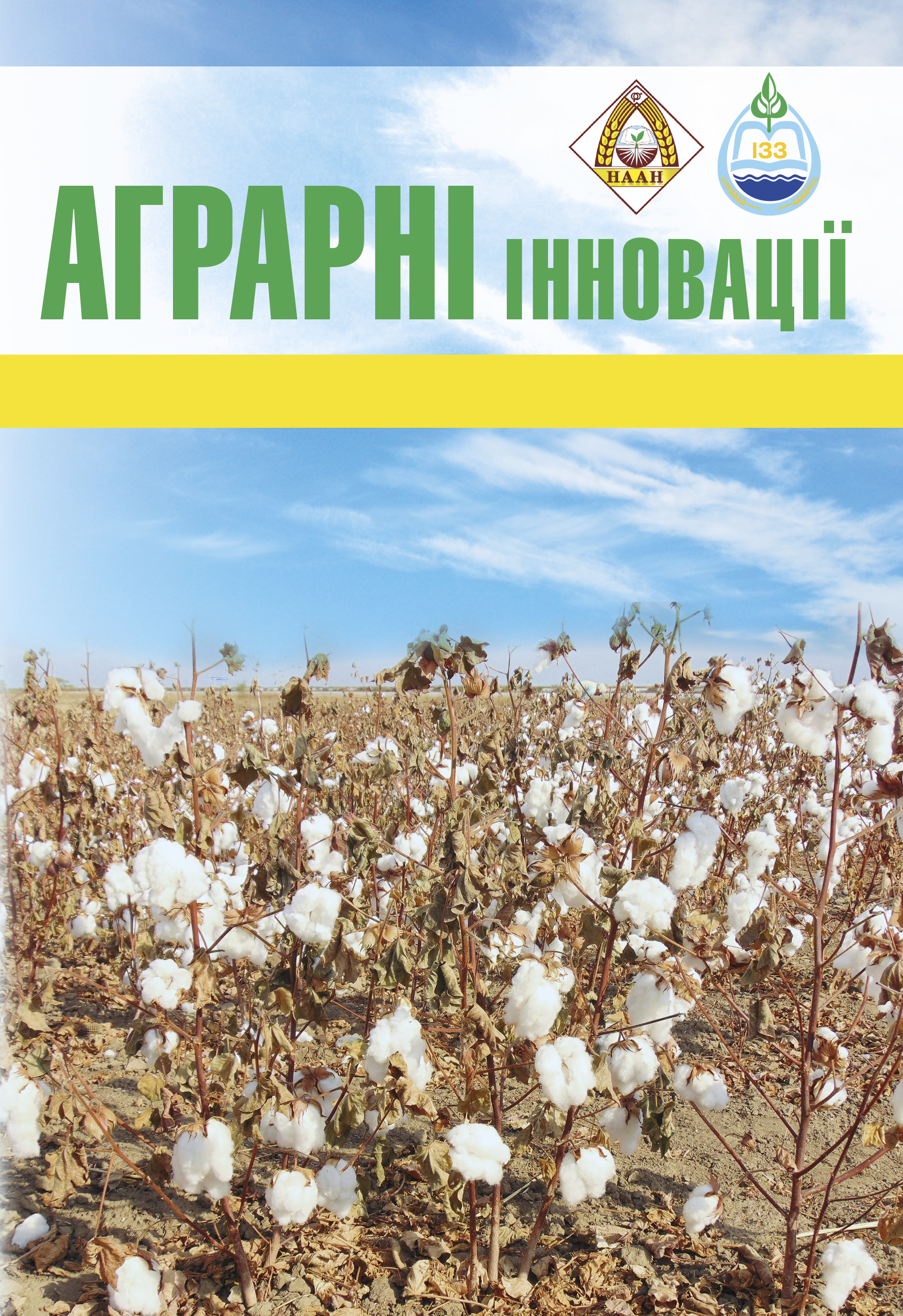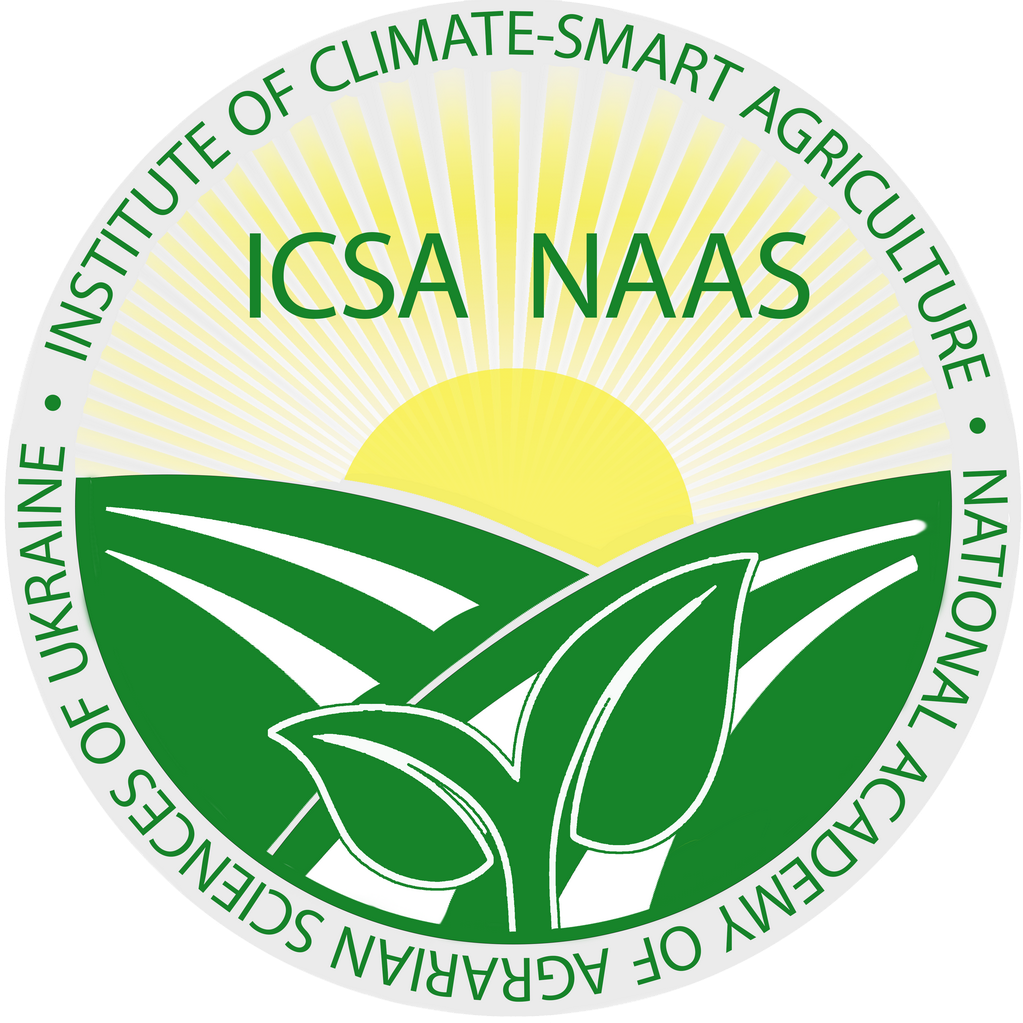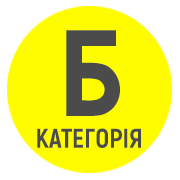Influence of Primary Tillage Systems on Soil Physical Properties in the Steppe Zone of Ukraine
Abstract
The aim of the study determine the influence of different primary tillage methods on the agrophysical properties of soil under the conditions of the Ukrainian Steppe, followed by the identification of the most effective tillage systems that enhance the growth and development of field crops in the context of increasing climate challenges. Methods: Field and laboratory studies. Results: It was established that the most favorable soil bulk density values were observed under moldboard tillage in spring, ranging from 1.08 to 1.16 g/cm³, which corresponds to the agrophysical optimum. Under the mulching system, this indicator increased to 1.14–1.22 g/cm³, and during the harvest period reached 1.33 g/cm³, indicating undesirable compaction.The highest density–up to 1.37 g/cm³–was recorded under shallow tillage, exceeding acceptable limits by 3.8–3.9%. The mulching tillage system contributed to the formation of the high- est share of agronomically valuable soil fractions (10–0.25 mm) within the 0–30 cm layer: up to 88.1% in solid-seeded crops and 70.5% in row crops, which was 4.4–6.8% higher than under moldboard tillage. At the same time, the lowest content of erosion-prone particles (<0.25 mm) was recorded under moldboard tillage–1.6–3.2%, which was 1.6–2.2% lower com- pared to other systems. Under shallow tillage, the soil structure was the poorest: the proportion of particles <0.25 mm reached 3.8%, and clods >10 mm reached 25.7%, indicating the devel- opment of secondary compaction. The highest total porosity in the 0–30 cm soil layer was provided by moldboard tillage: 55.9% in spring and 53.3% in autumn, exceeding the mulch- ing system by 1.6–1.7% and the shallow system by 2.9–3.5%.Aeration porosity in autumn under moldboard tillage reached 36.1%, exceeding the mulching system by 3.6–4.3% and the shallow system by 6.0–7.1%. The level of plant residue reten- tion on the soil surface strongly depended on the tillage method.Under the moldboard system, the number of conditional stub- ble pieces was only 14.4 pcs/m², which is critically insufficient for soil erosion protection. Shallow tillage increased this num- ber by 8.4 times–to 120.6 pcs/m², while the mulching system ensured the maximum value–207 pcs/m², which exceeded the moldboard variant by 14.4 times. In maize crops under mulch- ing tillage, stubble reached 450 pcs/m², more than 21 times higher than under traditional moldboard tillage. Conclusion: The moldboard primary tillage system in the steppe zone of Ukraine provides the best agrophysical indicators by forming optimal bulk density (1.08–1.16 g/cm³), high total (up to 55.9%) and aeration (up to 36.1%) porosity, as well as the lowest con- tent of erosion-prone particles (<0.25 mm) down to 1.6%. At the same time, the mulching system without plowing promotes the increase in the share of agronomically valuable fractions up to 88.1% and ensures the highest level of post-harvest residue retention (up to 207 pcs/m²), which is a crucial factor in reducing erosion processes.
References
2. Шевченко М. С., Деревенець-Шевченко К. А., Мицик О. О., Шевченко С. М., Козечко В. І., Пришедько Н. О. Обробіток чорного пару як фактор стабілізації врожайності зерна пшениці озимої в умовах північного степу україни. Аграрні інновації, 2025. № 29. С. 207–212.
3. Тараріко О. Г., Ільєнко Т. В., Кучма Т. Л. Формування екологічно стійких агроландшафтів в умовах змін клімату. Агроекологічний журнал. 2013. № 4. С.13–21.
4. Свиридов А. М., Колос М. О. Ефективність нульової технології обробітку ґрунту під горох на чорноземах звичайних. Вісник Харківського національного аграрного університету імені ВВ Докучаєва. Серія: Ґрунтознавство, агрохімія, землеробство, лісове господарство, екологія ґрунтів. 2016. № 2. С.100–108.
5. Цилюрик О. І. Сучасні системи мульчувального обробітку ґрунту в Північному Степу : монографія. Одеса : Олді Плюс+, 2023. 344 с.
6. Новітні техніко-технологічні рішення для різних систем обробітку ґрунту і сівби при вирощуванні зернових культур: проект АгроОлімп / Кравчук В., Погорілий В., Маринін С., Боднар О. Техніка і технології АПК. 2013. №7. С.37–41.
7. Єщенко В. О.. Накльока Ю. І., Коваль Г. В. Фізичний стан чорнозему опідзоленого за мінімалізації обробітку ґрунту. Вісник Уманського національного університету садівництва. 2023. № 2. С.13–19.
8. Єщенко В. О., Коваль Г. В., Калієвський М. В. Причини зниження урожайності польових культур на фоні плоскорізного основного обробітку ґрунту. Агробіологія. 2021. № 3. С. 49.
9. Єщенко В. О., Калієвський М. В. Напруження екологічної рівноваги за мінімалізації зяблевого обробітку ґрунту. Вісник Уманського національного університету садівництва. 2014. № 1. С. 25–29.
10. Шевченко М. В. Системи обробітку ґрунту. Землеробство. 2008. № 80. С.33–39.
11. Effect of the soil cultivation and fertilization on the abundance and species diversity of weeds in corn farmed ecosystems / Tsyliuryk O. I., Shevchenko S. M., Shevchenko O. M., Shvec N. V., Nikulin V. O., Ostapchuk Y. V. Ukrainian Journal of Ecology. 2017. №7(3). С.154–159.
12. Цилюрик О. І. Система мульчувального обробітку ґрунту в сівозмінах Північного Степу: монографія. Дніпро: Новий Світ – 2000, 2019. 298 с.
13. Цилюрик О. І., Судак В. М. Ефективність мульчувального обробітку ґрунту під соняшник в північному Степу України. Бюлетень Інституту сільського господарства степової зони НААН України. 2012. №2. С.82–87.
14. Цилюрик О. І. Ефективність мінімального обробітку ґрунту під кукурудзу в умовах Північного Степу України. Вісник Дніпропетровського державного аграрно-економічного університету. 2016. № 2. С.5–9.
15. Цилюрик О. І., Шапка В. П. Ефективність безполицевого обробітку ґрунту за вирощування ячменю ярого в північному Степу. Scientific Progress & Innovations. 2014. № 1. С. 25-29.
16. Цилюрик О. І., Судак В. М. Вплив мінімального обро- бітку ґрунту та удобрення на ріст і розвиток рослин соняшнику в умовах Північного Степу. Вісник Дніпропетровського державного аграрно-економічного університету. 2016. № 1. С. 25-32.
17. Tsyliuryk A. I., Kozechko V. I. Effect of mulching tillage and fertilization on maize growth and development in Ukrainian Steppe. Ukrainian Journal of Ecology. 2017. Vol. 7. P. 3.
18. Цилюрик О. І. Ефективність мінімального обробітку ґрунту під кукурудзу в умовах Північного Степу України. Вісник Дніпропетровського державного аграрно-економічного університету. 2016. № 2. С.5–9.
19. Гаськевич В. Г., Папіш І. Я., Телегуз О. Г. Фізика ґрунтів. Лабораторний практикум (Навчальний посібник). Львів: ЛНУ імені Івана Франка, 2021. 170 с.
20. ДСТУ ISO 11272:2001. Якість ґрунту визначання щільності складення на суху масу (ISO 11272:1998, ІDТ) Вид. офіц. Київ : Держспоживстандарт України, 2003. 15 с.
21. Якість ґрунту. Визначення твердості ґрунту твердоміром Рев’якіна: проект ДСТУ 5096:2008; розробники: Ю. Будьонний, С. Кудря, А. Свиридов, В. Синявін, М. Шевченко, Ю. Шевяков. Друга редакція. Київ: Держспоживстандарт України, 2009. 12 с.
22. ДСТУ 4744:2007. Якість ґрунту Визначання структурно-агрегатного складу ситовим методом у модифікації Н. І. Саввінова Вид. офіц. Київ : Держспоживстандарт України, 2005. 11 с.

This work is licensed under a Creative Commons Attribution 4.0 International License.






